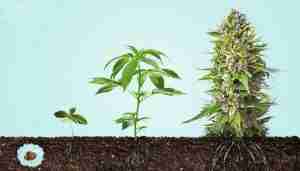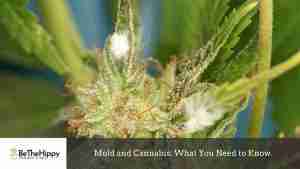Hey there, fellow plant parents! It’s your favorite plant whisperer, Bethehippy, coming at you with some fresh knowledge.
Today, we’re tuning into a special channel—cannabis leaves clawing vs. cupping. In our past discussions about curling cannabis leaves, we’ve touched on the subject, but now it’s time to dig deeper.
Just like our kids (or pets, or siblings), our green babies have their ways of telling us when something’s off.
Understanding this secret language of our plants can sometimes be as puzzling as solving a Rubik’s cube blindfolded, but don’t worry. I’m here to guide you through it.
Understanding Cannabis Plant Language
Before we dive into the nitty-gritty of clawing and cupping, let’s get something straight: your plants speak.
And no, I’m not talking about that one time after you took a little too much Sativa.
I’m talking about real, physiological changes that indicate the state of your cannabis plants.
Leaves are your plants’ way of reaching out to you. When your cannabis plants aren’t feeling their best, the leaves will show the first signs.
Clawing and cupping are two forms of leaf ‘talk’ that you, as a cannabis cultivator, should be familiar with. So, let’s get decoding.
What is Clawing?

Imagine your plant’s leaves curling downwards, forming a shape that resembles a claw. That’s what we refer to as ‘clawing.’ It’s as if your plant is reaching out, asking for help.
Several factors can cause clawing, such as nutrient toxicity, overwatering, or heat stress (yeah, remember our fun talk about the “scorched leaf syndrome”?).
Each cause leaves its unique signature on the leaves. For instance, nitrogen toxicity often results in leaves darkening and clawing downwards.
Your green babes could also be clawing due to overwatering, which brings us back to our discourse on healthy watering practices. Remember, balance is everything. Too much love (in this case, water) can be as harmful as too little.
What is Cupping?
Cupping is another story altogether. Visualize your plant’s leaves curving upwards, creating a cup-like shape. Hence, cupping. Your plants aren’t asking for a drink, though. They’re telling you something else.
Heat stress, light stress, and windburn are common culprits behind cupping. If you recall our guide on managing heat stress, you’ll know that overheating can turn your lush, green plants into a sad, droopy mess.
Similarly, exposing your plants to intense light or strong wind can cause the leaves to cup upwards as a defense mechanism.
How to Fix Clawing and Cupping
Identifying clawing and cupping is only the first step. Now comes the crucial part: fixing it. You don’t want to leave your plants in distress for too long.
As we discussed in our post about nutrient management, it’s all about providing your plants with the right nutrients in the correct amounts.
If clawing is due to nitrogen toxicity, you might need to adjust your nutrient mix. Overwatering can be fixed with a better watering schedule.
On the other hand, managing heat stress is key in preventing cupping. Providing optimal light conditions and protecting your plants from strong wind will also prevent cupping.
Maintaining Healthy Leaves for a Happy Harvest
Regular observation and intervention when you notice changes are crucial in maintaining the health of your cannabis plants.
Keeping an eye on your plants will help you catch signs of clawing and cupping early and address them promptly, ensuring a healthy and bountiful harvest.
FAQ
Can clawing or cupping damage my cannabis plants permanently?
If not addressed promptly, clawing and cupping can lead to stunted growth and decreased yield. However, if you catch these symptoms early and address the root cause, your plants can bounce back.
How can I prevent clawing and cupping in my cannabis plants?
Regular monitoring, providing optimal growing conditions, and maintaining a balanced nutrient and watering schedule are crucial in preventing clawing and cupping.
What are other names for clawing and cupping in the cannabis growing process?
In the cannabis community, there are many terms for the different ways leaves can manifest stress. Clawing is also known as “the claw,” “taco-ing,” or “leaf tip burn.” On the other hand, cupping might be referred to as “canoeing,” “curling,” or “tacoing” as well. It’s a whole world of jargon out there, but once you get the hang of it, you’ll be fluent in no time!
Remember, no matter the lingo, the important thing is understanding what your plant is trying to tell you and how to respond to ensure its health and happiness.
Parting Puffs: The Secret Language of Leaves
Remember, folks, knowledge is power. The more you understand your plant’s language, the better you can cater to their needs. And trust me, there’s no better feeling than knowing you’ve done everything you can to ensure your green gems thrive.
Next time you’re checking on your plants and you notice some clawing or cupping, don’t panic. You’ve got the knowledge, and now you’ve got the power to act. Keep those vibes high and those plants happy, my friends. Until next time, this is Bethehippy, signing off. Keep growing and glowing!





